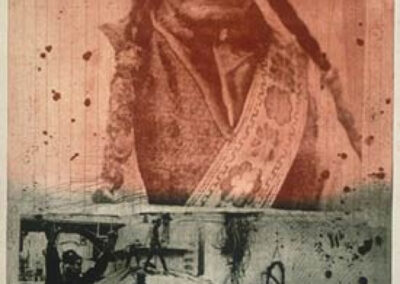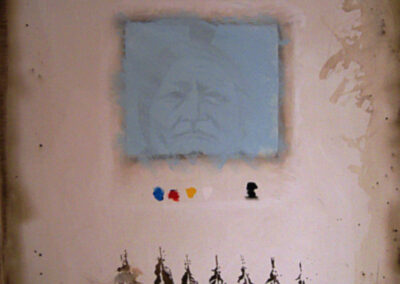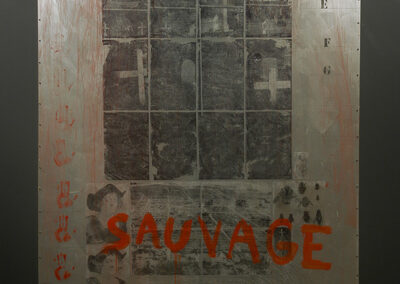Our next Artist You Need To Know is a landmark of Canadian art. If you live in the Niagara area, you also have the opportunity to see many of Carl Beam‘s works at the FirstOntario Performing Arts Centre, on the second floor, in downtown St. Catharines, as well. This is one of many galleries and collections, across Canada and beyond, that has his work (a recent exhibition at the Grimsby Public Art Gallery also showcased some of his lovely – and very political – works, as well).
-

Red Box, 1999
-

The North American Ice Berg, 1985
-

Sitting Bull and Whale (From the Columbus Suite), 1990
Carl Beam (1934 – 2005) was an artist who employed a variety of medias and techniques in his extensive practice, often exploring ‘the tensions between Western and Aboriginal relations. In his autobiographical work, he references himself as an Ojibwa, and places his Native culture within broader surroundings. He brings to attention problems that affect contemporary Native cultures and shows, through his juxtaposition of images, how these concerns relate to larger world issues. Through his work Beam integrates personal memory with issues related to the environment, brutality, and a rethinking of the ways histories are told.’ (from the National Gallery of Canada)
Beam was very much a giant upon whose shoulders many contemporary Indigenous artists ‘stood’, as he broke ground not only with his extensive exhibition history, but also in bringing issues and ideas to the forefront of the Canadian art world that demanded consideration, both in art historical narratives, but also what we think of as our ‘national imaginary’ (how we imagine Canada to be, and how we ‘know’ our past, and thus our future).
Originally from Manitoulin Island, Beam studied at the Kootenay School of Art (BC) and the University of Victoria. He earned an MFA from the University of Alberta in 1976. Collage and juxtaposition have always been hallmarks of his practice, and during his education, Jasper Johns, Robert Rauschenberg and Andy Warhol were all sources that influenced his formal techniques, as well as his re-purposing and re – presenting of popular and dominant cultural images and icons.
More from the excellent National Gallery of Canada biography on Beam: ‘The collage and photo-transfer techniques he often uses allow him to visually bring together subjects and events from different historical moments that he infuses with political commentary. His contemporary art-making strategies serve and empower his engagement with the struggle of Aboriginal people in the late 20th century.’
Beam was also a member of the Royal Canadian Academy of the Arts / Académie Royale des Arts du Canada and a recipient of the Governor General’s Award in Visual and Media Arts.








